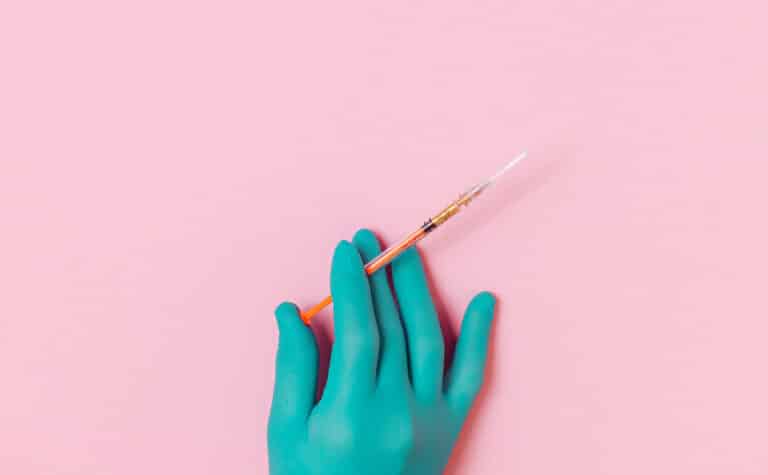Inside the toxic and misleading world of at-home Botox

Surgical and cosmetic procedures seem saturated in society today, with extremely dangerous methods to achieve ‘the look’ on the rise, young girls and feminine presenting people are at risk. Moveover Apetamin and BBLs, another toxic beauty trend is taking the internet by storm: at-home botox parties.
An obsession with anti-ageing methods is running rampant within gen Z, creating a new boom of baby Botox—also known as ‘preventative Botox’—along with other dangerous ways of procuring and using botox, which are becoming increasingly available.
Keep in mind that Botox can have medicinal value. It’s used to treat migraines, excessive sweating and bladder issues, to name a few. However, when used in a party environment (and paired with alcohol), Botox can be dangerous.
At-home Botox and Botox parties
You can order Botox online; yes, to your door, where you would administer the product yourself. Take a quick Google search and you’ll be bombarded by choices, with prices ranging from £100 to £700 for a box of apparent Botox. While Apetamin was swiftly taken down in the UK after the dangers of it surfaced, the availability of online Botox is still here for one simple reason—demand.
According to an investigation initially conducted by Which? that was then reported on by The Guardian 12 years ago, DIY Botox kits were already available online and even sold on eBay back then. The kits’ content often contained the ‘Botox’, needles, saline and a diagram of the face detailing the areas to inject. In 12 years, nothing has changed. In fact, it seems to have only worsened. While in 2009 it was found to be mostly sold on eBay, now there are hundreds of websites dedicated to the product.
Editor of Which?, Sarah Kidner, said, “It’s easy to forget that Botox is actually a poison. We were appalled that we were able to buy a DIY kit so easily and are concerned that the internet is becoming a marketplace for cut-price cosmetic treatments.” This research hasn’t aged well, has it? And wait—it gets worse… Welcome to the world of Botox parties.
Botox parties are a social gathering where Botox injections are readily available for administration. It’s a typical party, booze, snacks and socialising, there just happens to be a nurse (if you’re lucky) standing in the corner with a needle. Sounds like a good time…
The dangerous side effects of at-home Botox
Now, even in a safe, medically professional environment, Botox has its potential side effects. The most common symptoms often involve pain, bruising, redness and even infection at the site; other potential side effects can include the drooping of the face or eyelid, irritation to the eye area, double vision, and difficulty blinking regularly to name but a few. Even when used for medical conditions like the ones listed previously, the product comes with its risks.
In fact, one user took to RealSelf for medical advice over her use of at-home Botox, “I ordered Botox online and injected myself about a month ago. My cheeks went down tremendously but, [they’re] still swollen and yesterday the side area of my eyelid [has] become swollen as well.”
An experienced Botox practitioner, Malti O’Mahoney, told The Guardian, “If you did it yourself, with Botox you could end up paralysing your whole face. Facial muscles are very complex and a lay person would not know this. It is a full medical procedure, requiring a patient’s medical history and detailed consultations before any treatment takes place.”
This becomes an issue, especially when it comes to the fairly recent surge in Botox parties—their safety is wholly questioned. Remember when I said you’d be lucky if you saw a nurse at a party? Well, often there is no guarantee that the individual administrating the injections is even a licensed professional or, at the very least, experienced. It may be no different to the dangers of you doing it yourself.
Despite Botox being not directly harmful in small medically approved doses, it is still a toxin and, although rare, could cause side effects or even an allergic reaction. Because of this, if something goes wrong, there is no appropriate immediate medical attention that you would receive if visiting a clinic. Especially if you’re at a party and drinking alcohol. I don’t know about you but some of the parties I’ve been to have hardly been sanitary.
It’s not actually Botox
To make matters worse, the ‘Botox’ readily available online and at (unlicensed) Botox parties is unlikely to actually be Botox. Cosmetics Business reported that the Food and Drug Administration (FDA) had broadcast warnings in 2015 and 2017 on the distribution of fake Botox and fillers online; the market is largely unregulated and reportedly, possibly fatal. In fact, it’s pretty easy to determine the fakes since real Botox is a copyrighted trademark made by one company.
That one company is Allergan, a pharmaceutical corporation that is the sole manufacturer of authentic Botox, which is sent directly to medical practitioners and must be kept at a controlled temperature. Cosmetics Business (in collaboration with Red Points data) disclosed that counterfeit beauty products shot up during the COVID-19 pandemic, “with 74.14 per cent of cosmetics brands seeing a spike in cybercrime.” The dangers become even higher when knowing that counterfeit products are often cut with toxic and unsafe ingredients such as lead, mercury and even cyanide.
There’s no shame in getting Botox if that’s what you want to do—no judgement here—just make sure that if you’re going to get it, you get it the right way. Go to a bloody doctor.




